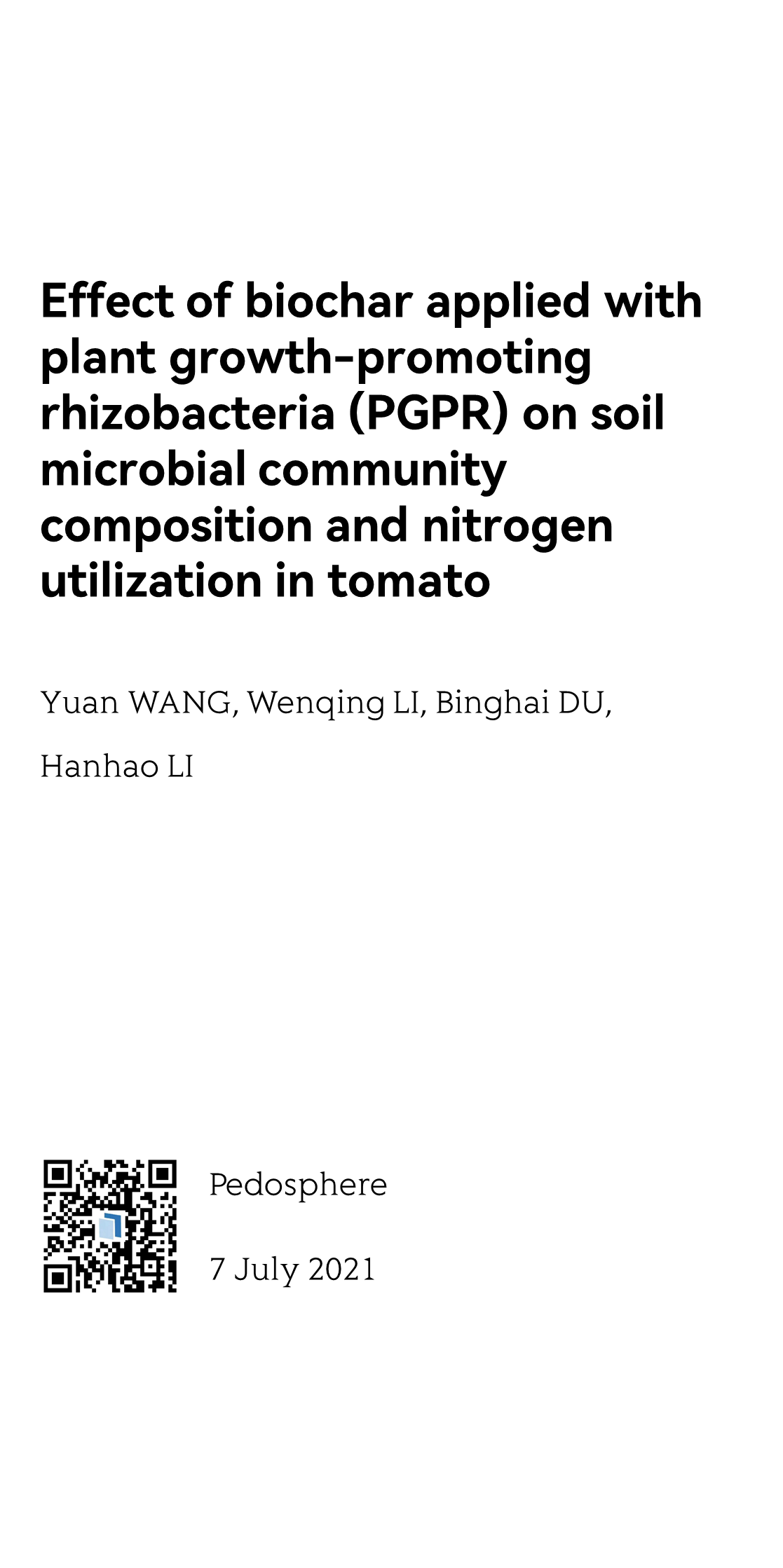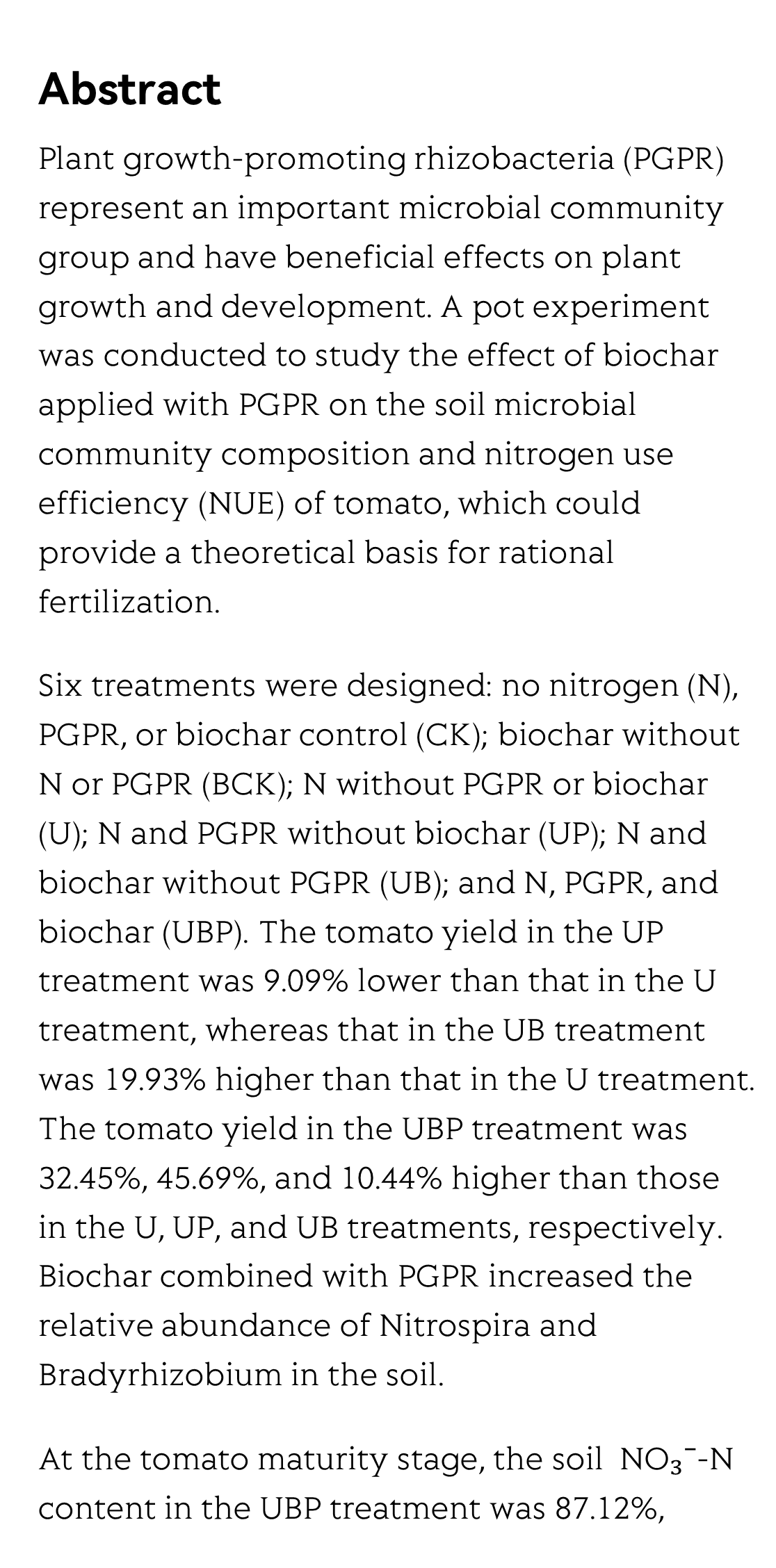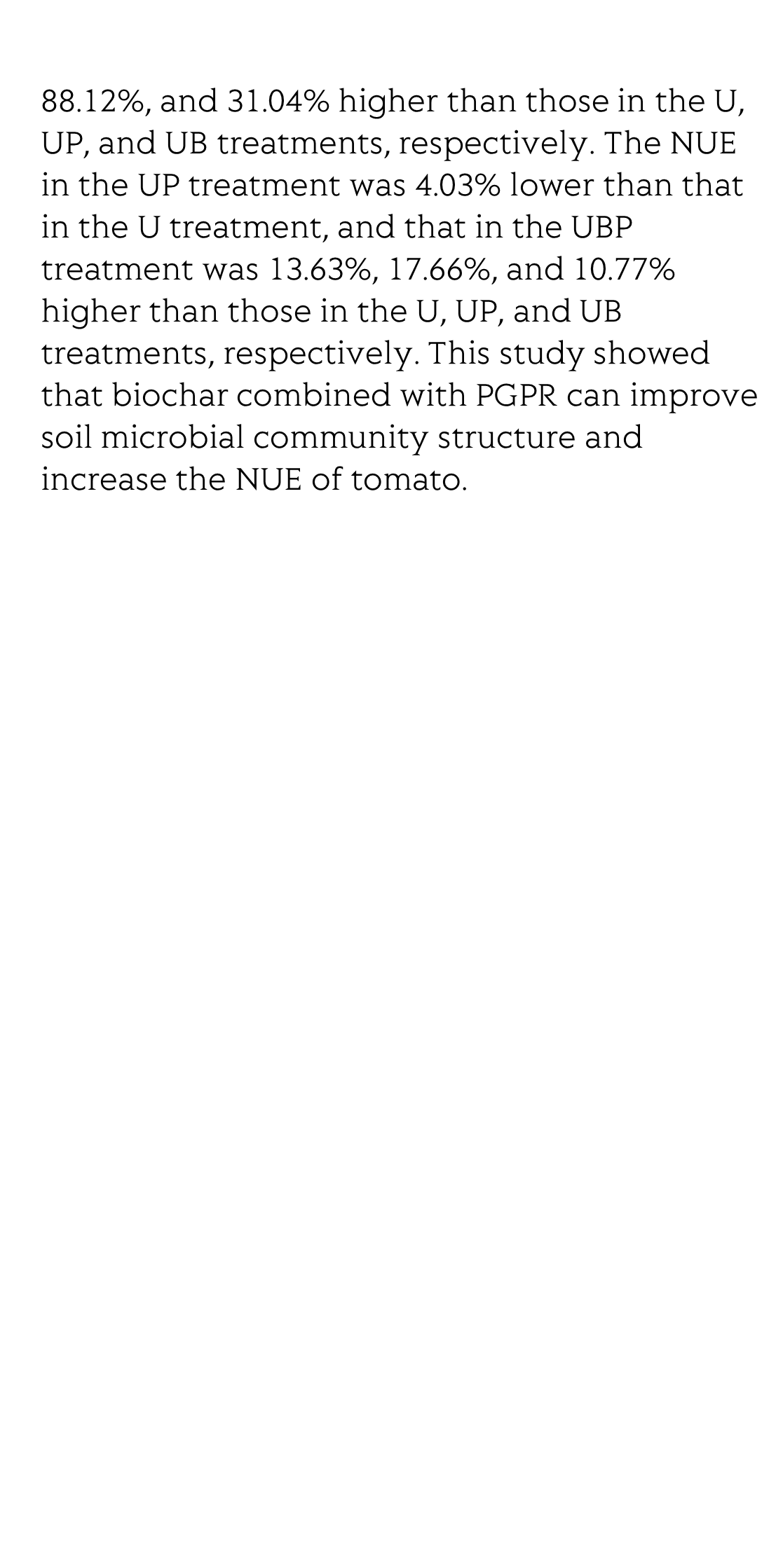(Peer-Reviewed) Effect of biochar applied with plant growth-promoting rhizobacteria (PGPR) on soil microbial community composition and nitrogen utilization in tomato
Yuan WANG 王媛 ¹ ², Wenqing LI 李文庆 ¹ ², Binghai DU 杜秉海 ³, Hanhao LI 李晗灏 ¹ ²
¹ National Engineering Laboratory for Efficient Utilization of Soil and Fertilizer Resources, Tai'an 271018 (China)
中国 泰安 土壤肥料资源高效利用国家工程实验室
² College of Resources and Environment, Shandong Agricultural University, Tai'an 271018 (China)
中国 泰安 山东农业大学资源与环境学院
³ College of Life Sciences, Shandong Agricultural University, Tai'an 271018 (China)
中国 泰安 山东农业大学生命科学学院
Abstract
Plant growth-promoting rhizobacteria (PGPR) represent an important microbial community group and have beneficial effects on plant growth and development. A pot experiment was conducted to study the effect of biochar applied with PGPR on the soil microbial community composition and nitrogen use efficiency (NUE) of tomato, which could provide a theoretical basis for rational fertilization.
Six treatments were designed: no nitrogen (N), PGPR, or biochar control (CK); biochar without N or PGPR (BCK); N without PGPR or biochar (U); N and PGPR without biochar (UP); N and biochar without PGPR (UB); and N, PGPR, and biochar (UBP). The tomato yield in the UP treatment was 9.09% lower than that in the U treatment, whereas that in the UB treatment was 19.93% higher than that in the U treatment. The tomato yield in the UBP treatment was 32.45%, 45.69%, and 10.44% higher than those in the U, UP, and UB treatments, respectively. Biochar combined with PGPR increased the relative abundance of Nitrospira and Bradyrhizobium in the soil.
At the tomato maturity stage, the soil NO₃⁻-N content in the UBP treatment was 87.12%, 88.12%, and 31.04% higher than those in the U, UP, and UB treatments, respectively. The NUE in the UP treatment was 4.03% lower than that in the U treatment, and that in the UBP treatment was 13.63%, 17.66%, and 10.77% higher than those in the U, UP, and UB treatments, respectively. This study showed that biochar combined with PGPR can improve soil microbial community structure and increase the NUE of tomato.
Meta-lens digital image correlation
Zhou Zhao, Xiaoyuan Liu, Yu Ji, Yukun Zhang, Yong Chen, Zhendong Luo, Yuzhou Song, Zihan Geng, Takuo Tanaka, Fei Qi, Shengxian Shi, Mu Ku Chen
Opto-Electronic Advances
2025-07-29
Broadband ultrasound generator over fiber-optic tip for in vivo emotional stress modulation
Jiapu Li, Xinghua Liu, Zhuohua Xiao, Shengjiang Yang, Zhanfei Li, Xin Gui, Meng Shen, He Jiang, Xuelei Fu, Yiming Wang, Song Gong, Tuan Guo, Zhengying Li
Opto-Electronic Science
2025-07-25





